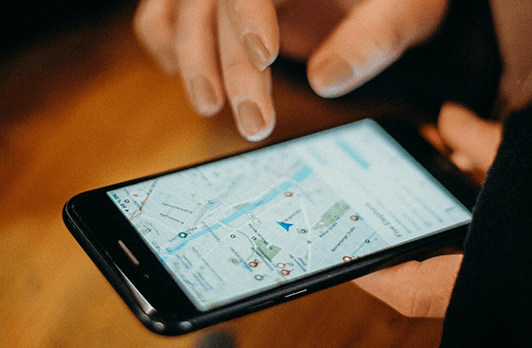 In 2024, It’s What’s on the Inside That Counts
In 2024, It’s What’s on the Inside That Counts
The integration of AI and smartphones is here. Given how used to rapid changes in the tech industry we are, this sentence in 2024 almost seems as natural and fleeting as blinking. However, given that mobile devices have only been around for a little over 40 years, this is major news that will have transformative and lasting impacts on the mobile devices we rely on day in and day out.
The conception of mobile devices began in 1983 with Motorola’s 3lb DynaTAC 8000X. For years following, many notable devices entered the market and seemed very focused on outward design and aesthetics. Such devices (that may also spark nostalgia) are Nokia’s durable devices in the 1990s; the first smartphone, IBM’s Simon Personal Communicator; In Motion’s trendy BlackBerry; and Motorola’s sleek Razor series. As time did tell, these devices and their designs also saw their way out.
Today’s modern smartphones such as those from Apple, Samsung, and LG typically feature fewer buttons, larger screens, and camera capabilities – setting a standard across companies for smartphone design that hasn’t changed much since the first iPhone in 2007. But what has changed dramatically is what’s inside of these smartphones, and generative AI marks a brand-new era of mobile devices and how they are projected, like Tetris pieces, to fit into our daily lives seamlessly.
The Rise of AI in Smartphones
AI is no longer just a tech buzzword—it has become integral to how many technologies, including smartphones, function. Although its abilities have and will continue to develop over time, the goal of pairing up AI and smartphones is to enhance user experience. This was seen with personal assistants being added to mobile device operations like Siri, Google Assistant, and Bixby.
What’s driving these devices into a new era is generative AI and advanced machine learning (ML) which can enhance communication, offer generative image editing, handle task automation, extend accessibility, and provide a multitude of other intuitive, user-centric features. Thanks to recent advancements in AI/ML, the competition is on as companies race to squeeze these features into their hands to transform everyday life into something of the future.
New Features Show the Power of When AI and Smartphones Merge
-
- Writing just got easier. Apple’s upcoming iPhone 16, for example, offers a wide range of writing tools that are processed via Apple Intelligence, allowing users to transform notes to formal text, rewrite based on specified tone, summarize text, audio recordings, and transcripts, and proofread.
- The virtual assistants we know, and love, are getting an upgrade. The integration of advanced AI/ML means virtual assistants can better understand the natural cadence and real-time error correction that happens when we speak. They also now have the capabilities to learn routines and make suggestions that simplify day-to-day interactions with your device.
- Don’t worry about taking another cringe photo, AI has got your back. Long were the days when just having a phone camera was considered exciting. Now, Google’s Pixel 8 utilizes AI to get the best photos – or edit subpar ones – with the Magic Editor. Features include taking objects out of photos, extending backgrounds, and swapping out best takes. Other smartphone AI systems can also identify areas of improvement and make suggestions for enhancing image quality, generate text summaries, and edit images via voice descriptions in real-time. This is a major win for both casual users and professional content creators alike.
- Flipping through translation books is a thing of the past. Living in a globally connected world, it’s not uncommon to catch yourself needing to translate text or audio from another language. Smartphone AI technology is now doing that in a variety of ways, from translating text-to-speech, translating videos and photos into a preferred language, and utilizing live translation while two people are speaking.
- Find what you are looking for faster. Many smartphones are finding new ways to simplify how users search for information, both virtually and on the device itself. The Samsung Galaxy S24, for example, enables users to take a photo/ screenshot and circle what they are looking for. This starts a Google search to match the specific image or text circled. Other search features include audibly or text describing what you are looking for, allowing AI to take over and search the device itself for images, apps, and even specific moments in videos.
- No need to “get organized,” our phone will already have done that. Although having numerous apps will still be commonplace, having to navigate between them will be a thing of the past. AI within newer smartphones will be able to mitigate and consolidate tasks across different apps. Features such as summarizing email threads and prioritizing notifications also lend a hand in keeping the user and device organized.
Is Data and Privacy Secure with AI?

The fusion of AI and smartphones is bringing a lot of excitement for upcoming smartphones and mobile devices, but not everyone is convinced. Hesitancy to fully buy into AI stems from concerns over privacy and security.
AI learns by collecting and analyzing vast amounts of data. From there, predictive AI can be used to predict future outcomes and generative AI to create content and problem-solve. Security and privacy concerns arise as there is apprehension about how AI will collect, store, and utilize personal data that phones have access to.
Combatting this issue, AI and smartphones function through the usage of specialized AI chips that enable computations to be done on that device, versus sending info into a cloud or onto other web sources that could be intercepted. With the launch of iOS.18, Apple is promising Private Cloud Compute, private AI processing that guarantees private personal data isn’t accessible to anyone including Apple, only used for your requests, and will have continual verification of said privacy promise. Privacy and security standards are key moving forward for what companies should provide, and what consumers can expect.
AI Expands possibilities
Since their invention, cell phones have been on a unique journey, meshing the original ability to communicate with a device that encompasses most of our daily lives. Thus, we’ve reached a point where AI and smartphones have become the new, defining moment in mobile technology, enhancing everything from cameras to personalized assistance. As such, phone manufacturers are pushing the boundaries of their own AI innovations to bring about smartphones that are smarter, more responsive, and more personal than ever before. The integration of AI and smartphones means they’ve also been integrated into our lives. So, it’s only fair to pose the timeless question: what’s next?
For the latest in telecommunications and technology news, check out GeoTel’s News tab.
 In 2024, It’s What’s on the Inside That Counts
In 2024, It’s What’s on the Inside That Counts
